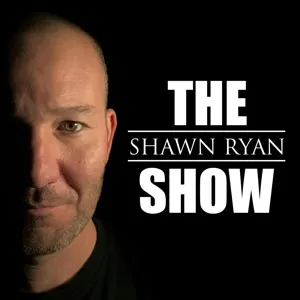Podcast Summary
Childhood experiences shape our perceptions: Growing up in a working-class family, Dave Henson found solace in media figures and the Boy Scouts, but his experience with the latter was disappointing due to sexual abuse claims. His childhood experiences continue to influence his character and values.
Childhood experiences, including joining organizations like the Boy Scouts, can shape our perceptions of ourselves and the world around us. For Dave Henson, growing up in a working-class family with limited resources led him to find solace in media figures like John Wayne and the Boy Scouts. He saw these figures as role models, embodying values like preparedness, heroism, and adherence to a code of conduct. However, his experience with the Boy Scouts ultimately turned out to be far from the idyllic image he had in mind. The organization, which filed for bankruptcy this year due to thousands of sexual abuse claims, failed to live up to the ideals Henson had hoped for. Despite this disappointment, Henson's childhood experiences continue to influence his character and values, serving as a reminder of the profound impact that formative years can have on our lives.
The Boy Scouts shaped Dave's childhood experiences and character: Dave gained valuable skills, survival techniques, and enduring friendships from the Boy Scouts, despite an incident of betrayal by a mentor.
The Boy Scouts played a significant role in shaping Dave's character and experiences during his childhood. The values and friendships he gained from the Scouts were meaningful and enduring. One particular mentor, Tony, an assistant scout master and Eagle Scout, had a profound impact on Dave. Tony was a trusted and respected figure who took Dave under his wing and taught him valuable skills and survival techniques. Their bond was strong, and they spent many camping trips together. However, the story takes a dark turn when Dave reveals that one night, Tony inappropriately touched him while they were camping. The incident left Dave confused and frozen, and it was a moment of betrayal and violation. Despite this, the positive experiences and lessons Dave gained from the Boy Scouts and Tony outweighed the negative. The Boy Scouts provided a sense of adventure, camaraderie, and personal growth, and the impact of these experiences stayed with Dave throughout his life.
Childhood trauma: A boy scout's story: Childhood sexual abuse can leave lasting impacts on survivors, affecting their sense of normalcy and childhood experiences, and often resulting in feelings of pain, darkness, and weight.
The survivor, Dave, experienced a traumatic event starting around the age of 11 during a camping trip with the Boy Scouts. The event involved unwanted touching and talking from a leader, which left Dave feeling frozen, in pain, and overwhelmed by the weight of the situation. He didn't understand what was happening and was afraid of the repercussions, so he didn't tell anyone. The abuse continued for the next five years, and Dave felt disconnected from his childhood experiences during that time. He went on autopilot, trying to maintain normalcy and communication with his parents and friends. The experience left him with lasting memories of pain, darkness, and weight. It's important to note that Dave was an 11-year-old boy at the time and didn't fully comprehend the nature of the abuse. This example highlights the complexity and long-term impact of childhood sexual abuse.
Childhood sexual abuse's impact on isolation and manipulation: Childhood sexual abuse can lead to feelings of isolation, manipulation, and addiction, creating a destructive cycle that can last into adulthood.
The survivor, Dave, experienced a deep sense of isolation and differentness growing up, which led him to seek out the mentorship of his abuser, Tony. However, their relationship became increasingly manipulative and abusive, with Tony using their time together as opportunities for sexual assault. At the age of 15, Dave ended the relationship and tried to move on, but he struggled with feelings of shame and confusion. He turned to alcohol as a means of escaping his anxiety and fear, eventually leading to a destructive cycle of addiction. Despite recognizing the harm caused by his drinking, Dave found it difficult to connect with the recovery community and continued to struggle with his addiction until he was forced into a substance abuse program by the Navy. The experiences of isolation, manipulation, and addiction underscore the complex and far-reaching impact of childhood sexual abuse.
Childhood trauma shapes adult behaviors and relationships: Childhood trauma can significantly impact an individual's relationship with alcohol and lead to fear, anxiety, and compulsive behaviors. It's essential to address and heal from such experiences to lead a healthy and fulfilling life.
The speaker's past experiences, including being molested as a child, significantly impacted his relationship with alcohol and shaped his fear and anxiety around certain situations, such as his oldest son joining the Boy Scouts. This fear led him to spiral out of control, leading to anger, violent thoughts, and compulsive behaviors. However, the support of his wife and family during this time helped him to stop drinking and find happiness in his later years. Despite his efforts to protect his children, his past trauma continued to affect him, causing him to feel intense fear and mistrust towards others. The experience highlights the long-term impact of childhood trauma and the importance of addressing and healing from such experiences to lead a healthy and fulfilling life.
Pressure to hide emotions can lead to mental health issues: Open communication, acknowledging discomfort, and seeking professional help are crucial for maintaining emotional well-being.
The pressure to maintain a tough exterior for the sake of one's family can lead to immense emotional strain. In the discussed narrative, a father's discomfort with his son's involvement in Boy Scouts led him to experience significant anxiety and unease, despite his attempts to hide it. His wife eventually intervened, and the son's own negative experiences with the organization led him to leave. The father's inability to express vulnerability and seek help contributed to his mental health deterioration, culminating in a hospitalization at age 19. This story underscores the importance of open communication, acknowledging and addressing discomfort, and seeking professional help when needed.
Healing from Child Abuse: A Long and Ongoing Process: Reporting child abuse can be met with disappointing responses, but seeking help and finding validation from others who have gone through similar experiences can provide some relief in the healing process.
Healing from past traumas, such as child abuse, is a long and ongoing process. The speaker in this discussion has been working to understand and process his experiences, grappling with feelings of guilt, fear, and inadequacy. He has sought professional help, including therapy, psychotherapy, and medication. Despite these efforts, he continues to struggle with emotions like shame and a desire for redemption. The speaker's decision to report the abuse to Child Protective Services in 2019 was met with a disappointing response, but he later learned that he was not alone in his experiences. Thousands of other boys had also reported abuse within the Boy Scouts organization. This discovery provided some measure of validation and solidarity, but the speaker's journey towards healing remains a complex and ongoing process.
Boy Scouts face bankruptcy due to sexual abuse lawsuits: The Boy Scouts of America filed for bankruptcy due to numerous sexual abuse lawsuits, encouraging other youth organizations to prioritize child safety and spend necessary funds.
The Boy Scouts of America are facing a large number of sexual abuse lawsuits due to changes in state and local laws that allow people to file claims even if the alleged abuse happened many years ago. These lawsuits have led the organization to file for bankruptcy in order to try and survive by compensating victims, but thousands of claims have poured in, many of which allege multiple instances of abuse. The cost of making significant changes to prevent such abuse in the future is high, and the message to the Boy Scouts is that something terrible has already happened and change is necessary. Other organizations in charge of youth development are encouraged to establish appropriate processes and spend the necessary funds to ensure the safety of children. This is a monumental step forward in holding the Boy Scouts accountable for past abuse and preventing future incidents.
CDC Director Predicts Devastating Winter with Up to 450,000 COVID-19 Deaths: The CDC director predicts a devastating winter with up to 450,000 COVID-19 deaths in the US, as the number of hospitalized patients surpasses 100,000 for the first time.
While the world takes a significant step forward in the fight against the coronavirus with Britain's emergency authorization of Pfizer's vaccine, the situation in the United States remains dire. The CDC director, Robert Redfield, warned of a devastating winter, predicting up to 450,000 deaths by February. This comes as the number of COVID-19 patients in American hospitals surpassed 100,000 for the first time. These are challenging times, and the upcoming months are expected to be the most difficult in the nation's public health history. The vaccine is a beacon of hope, but it's crucial to remain vigilant and follow health guidelines to minimize the number of cases and deaths.




